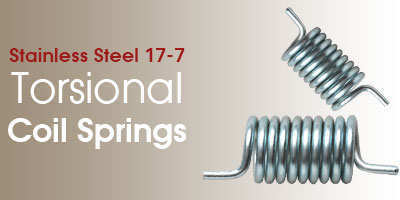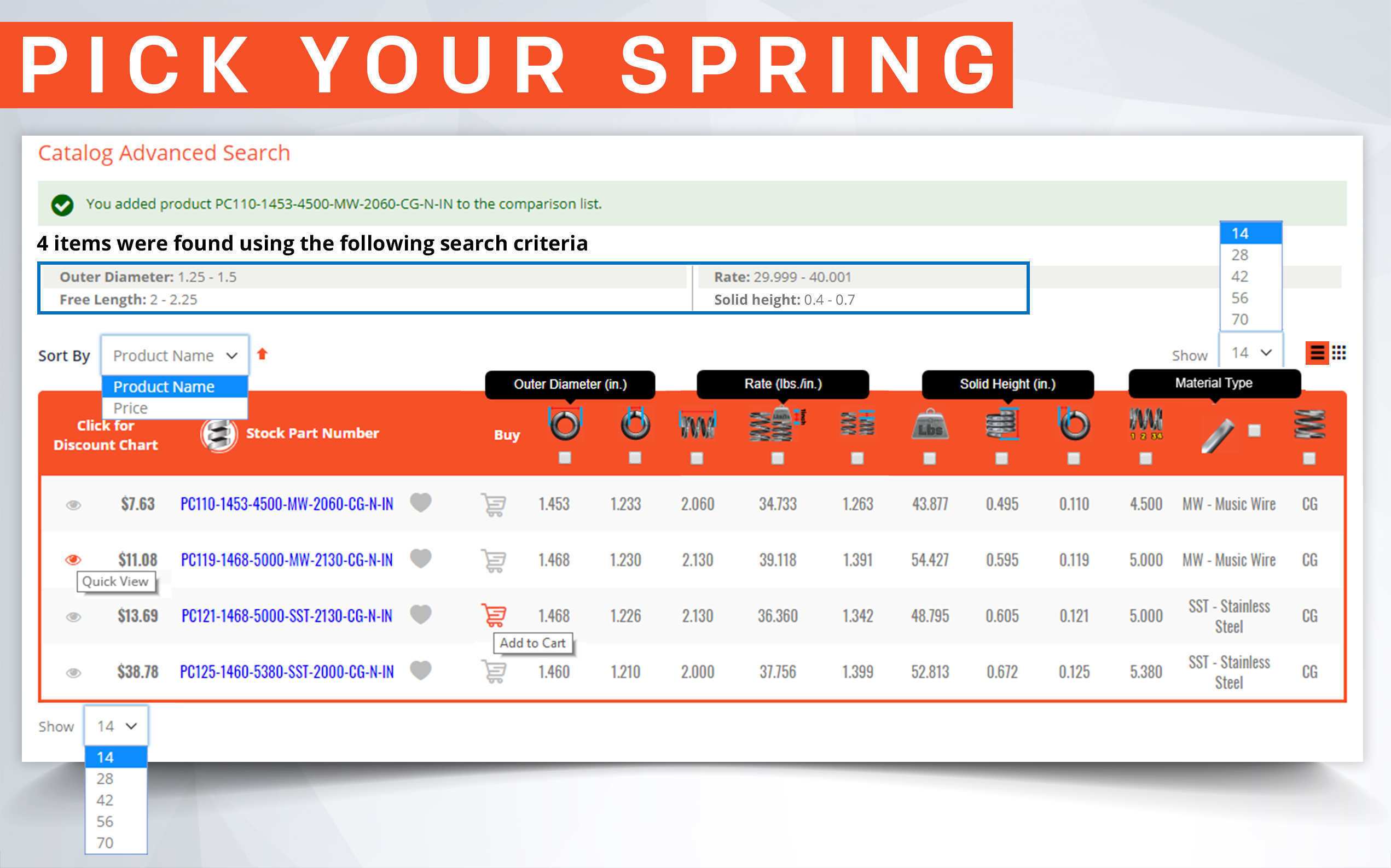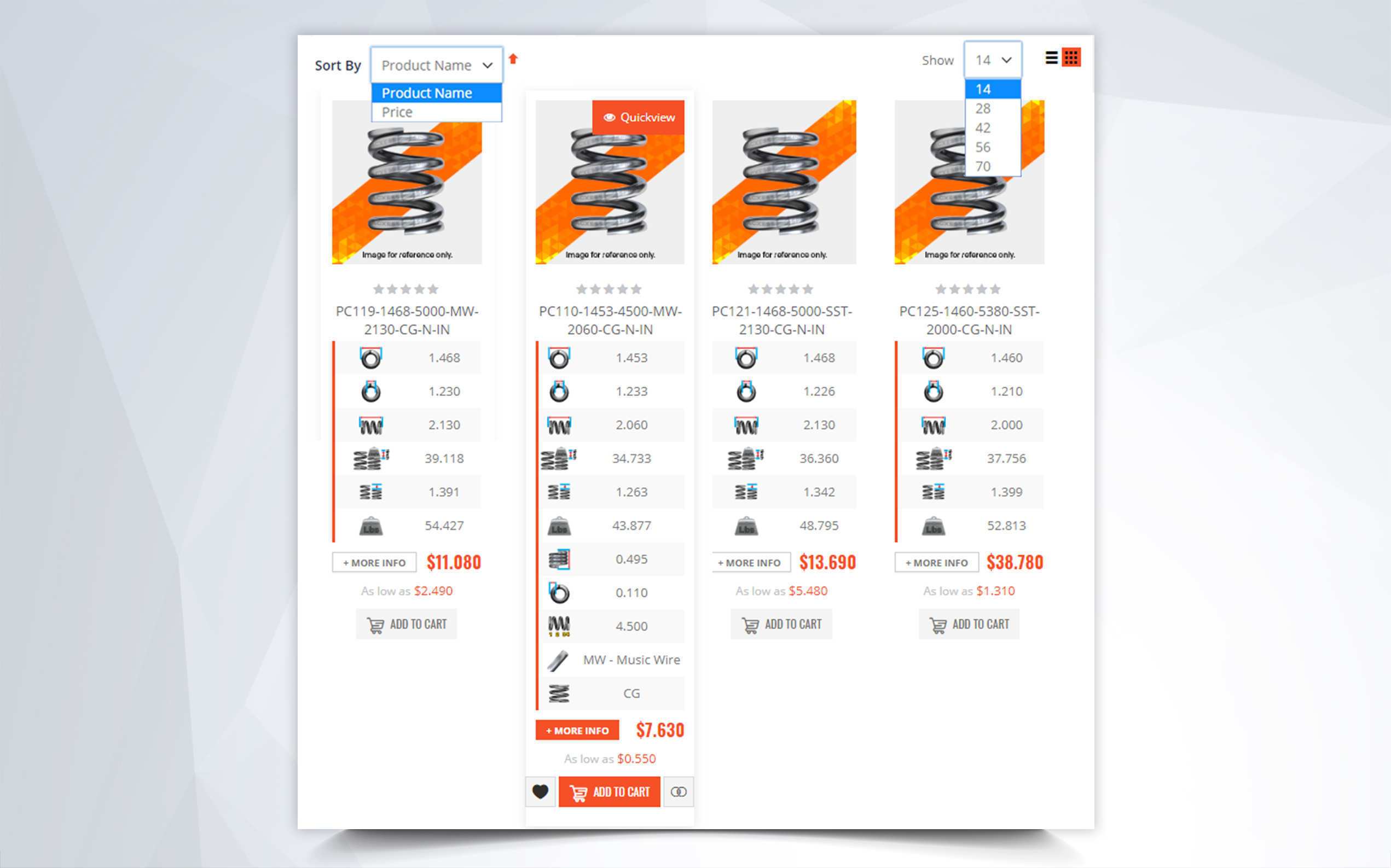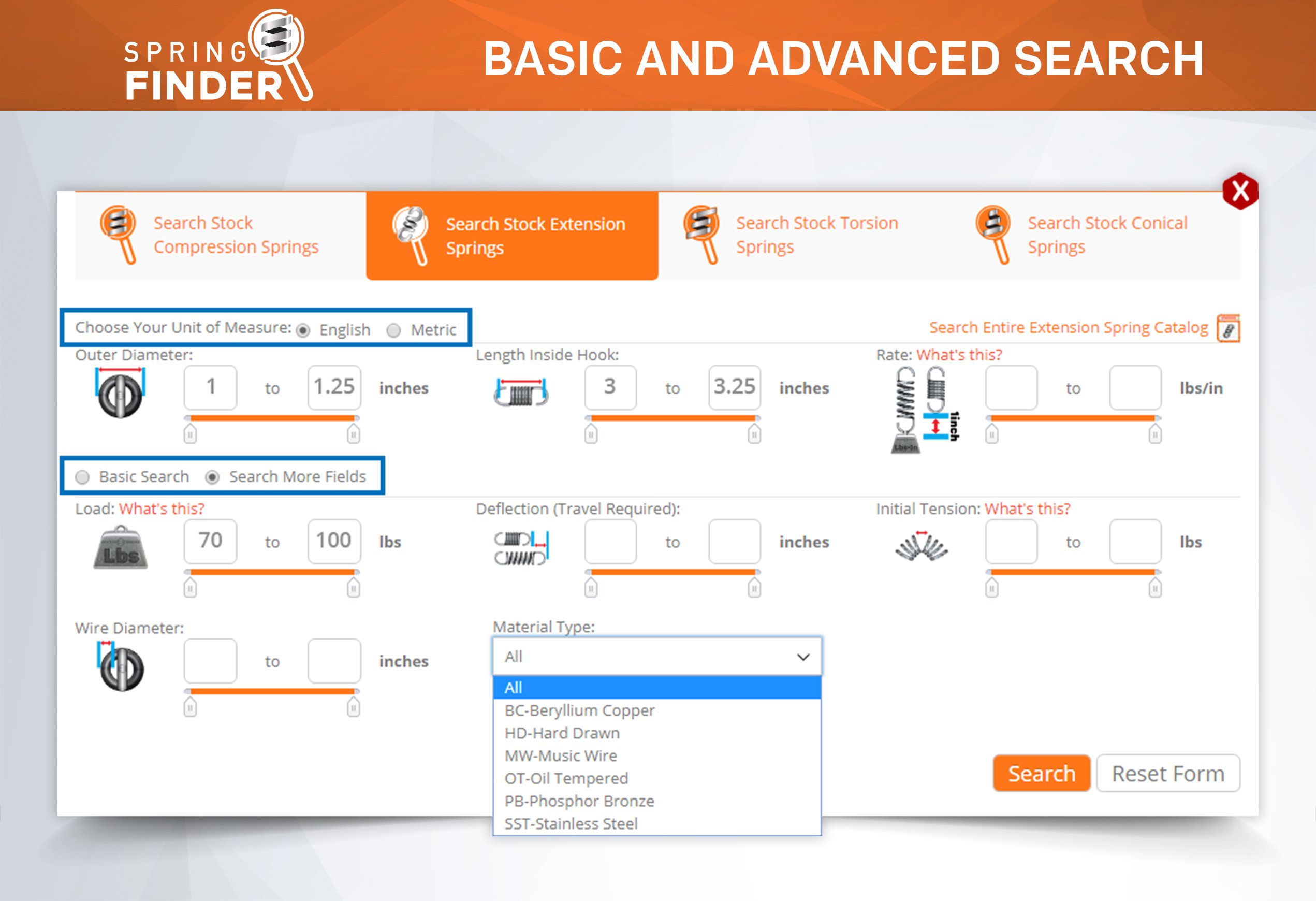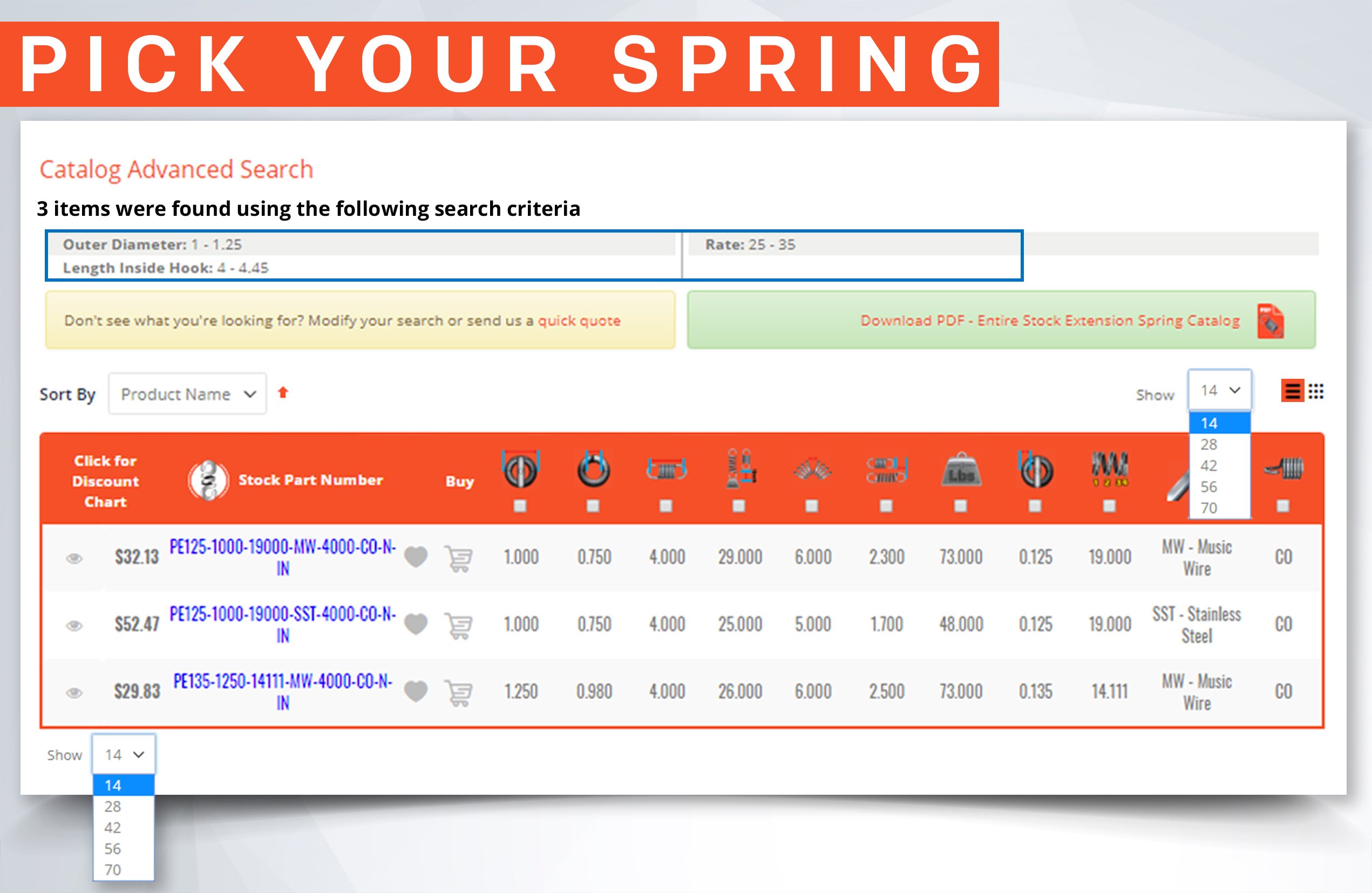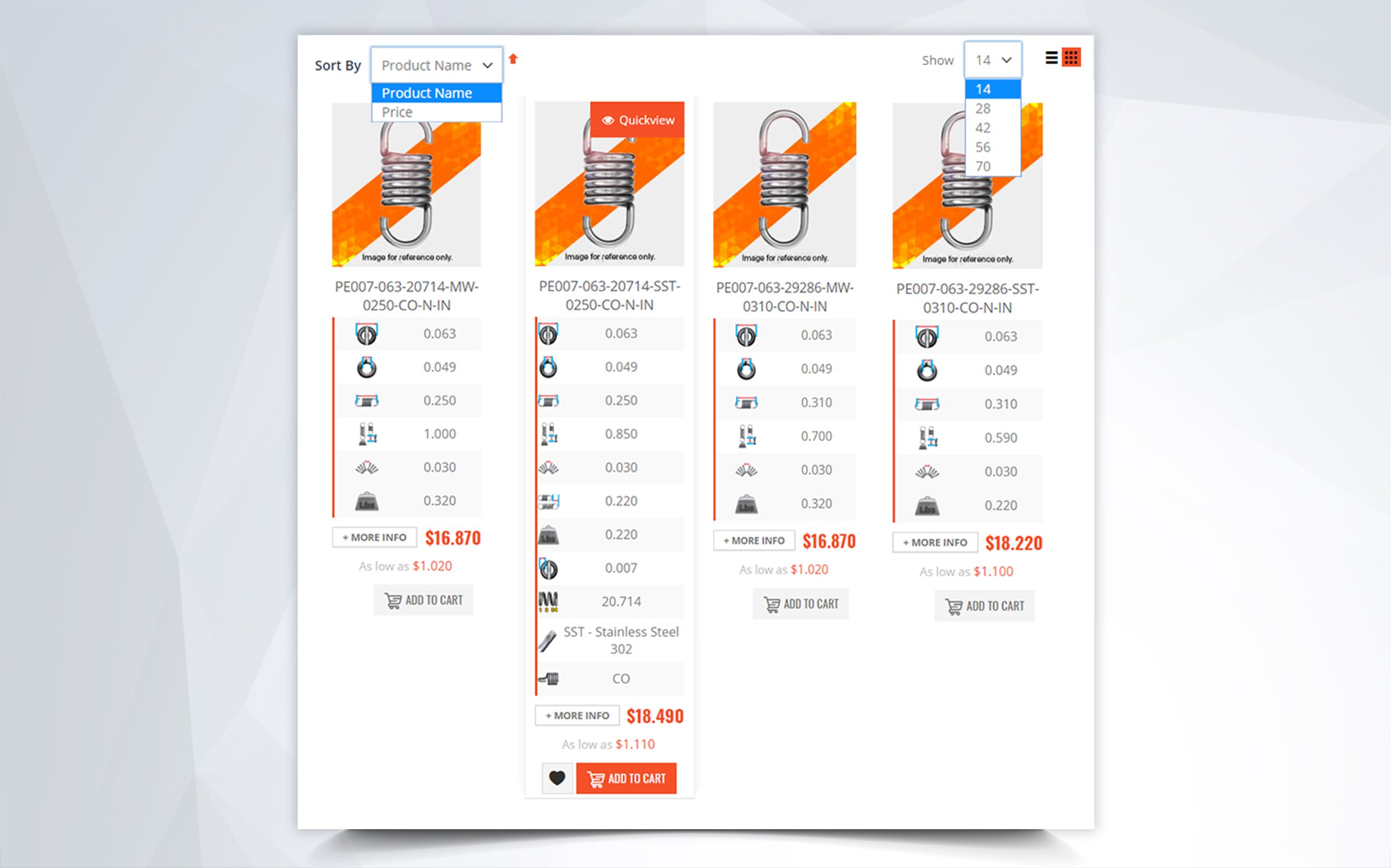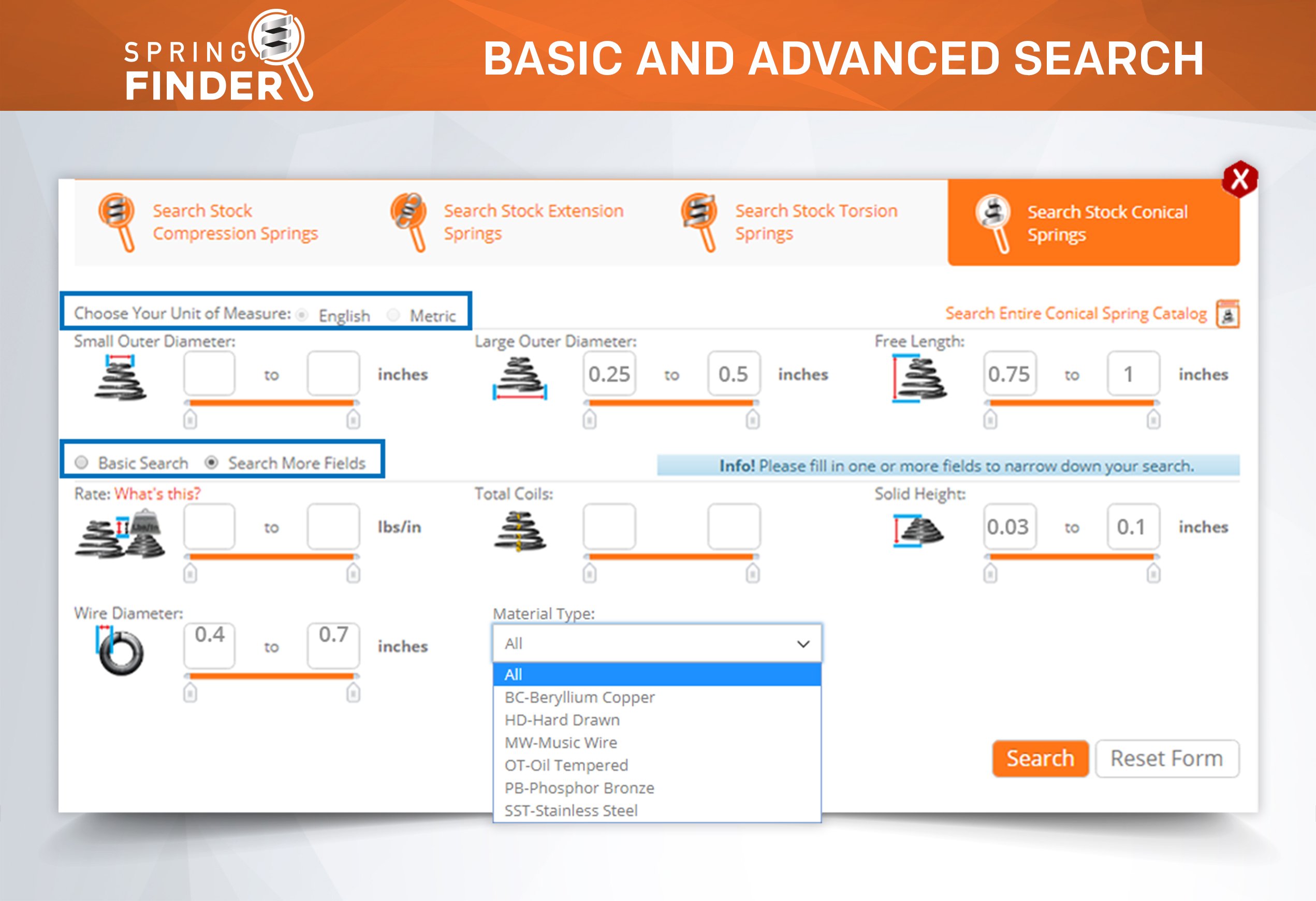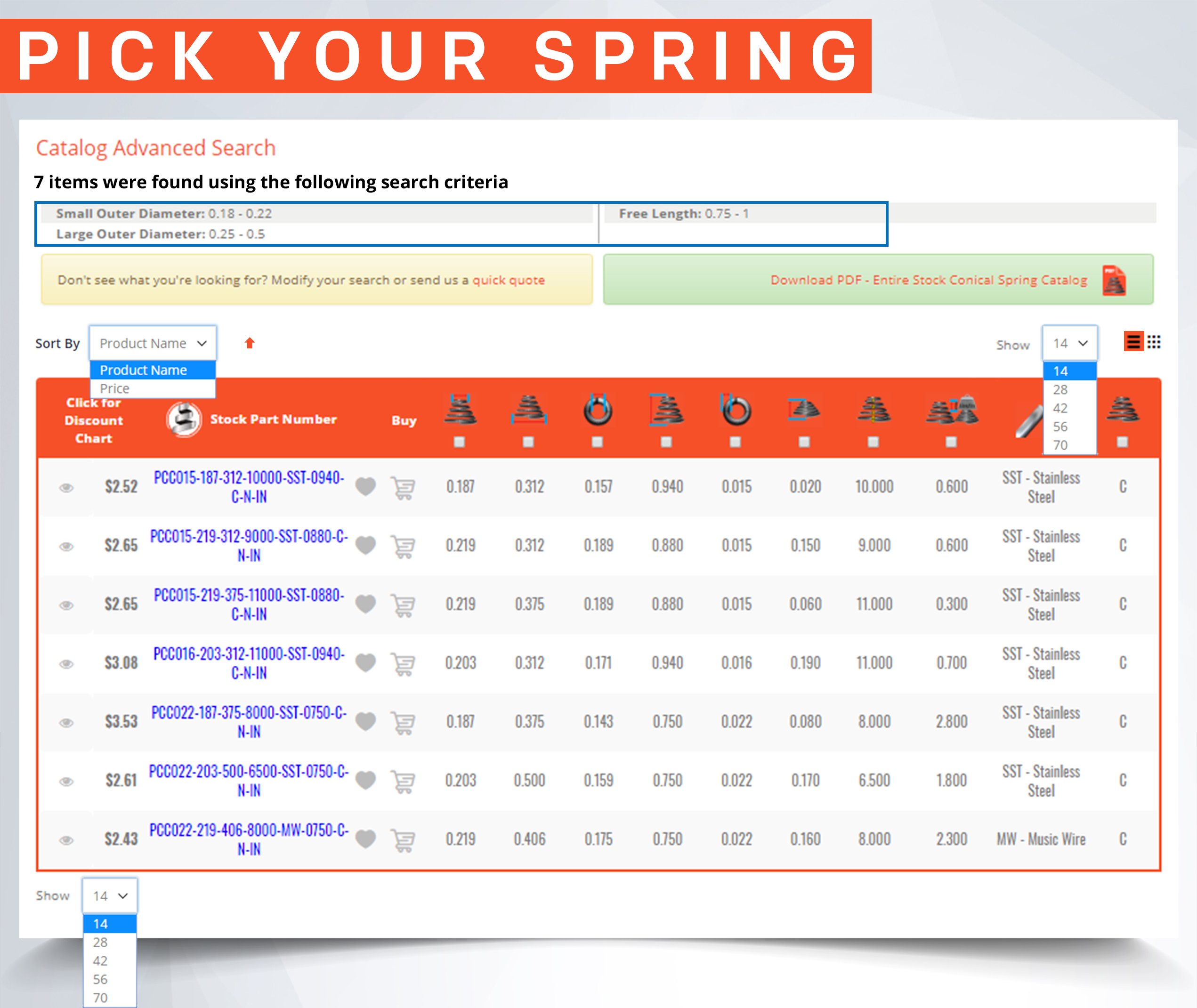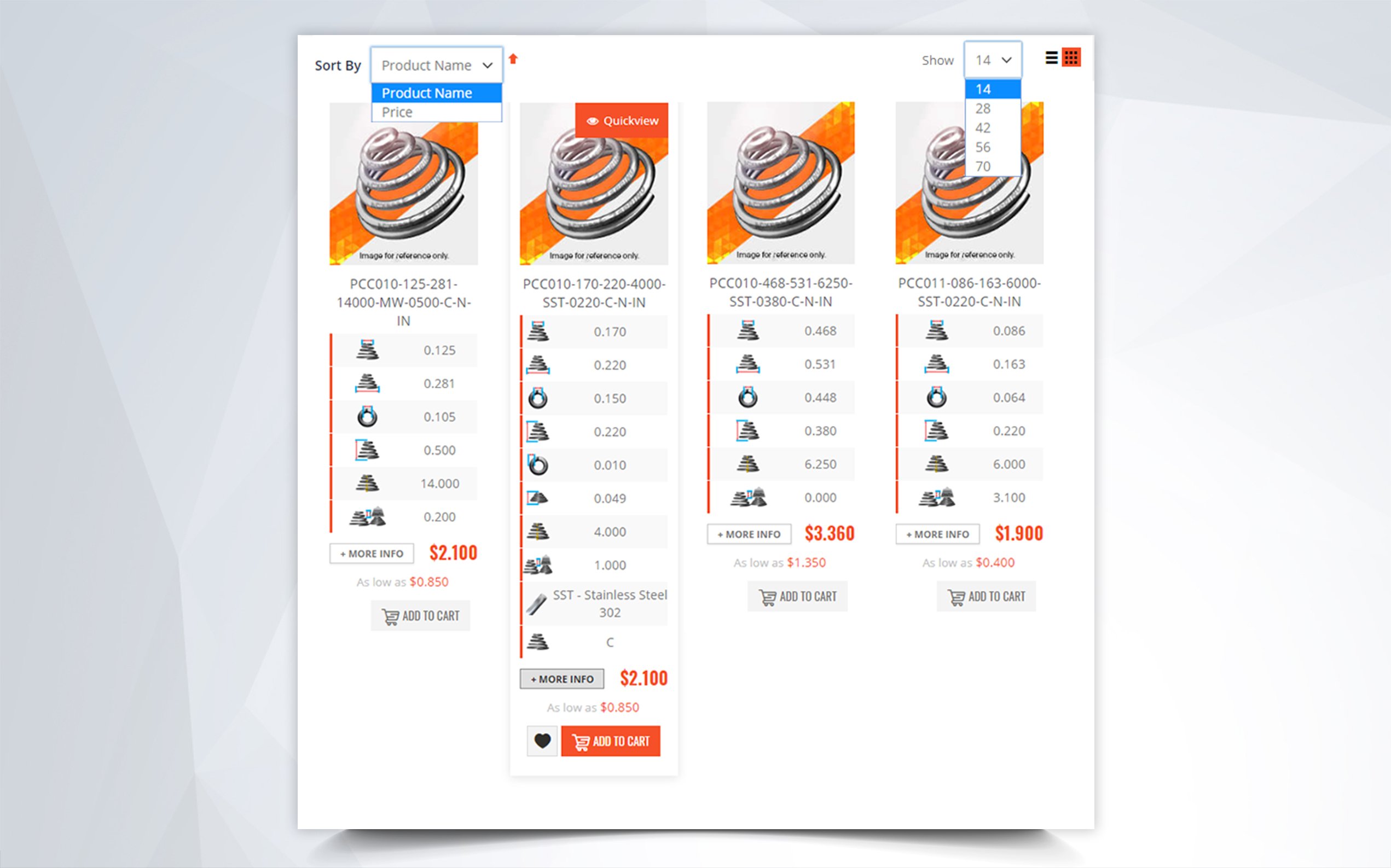Stainless Steel - Coil Spring Design
This article is about:
Designing helically wound wires shaped to form a coil spring out of a stainless steel material. We discuss the three types of Stainless Steel as well as in which cases each material type might be required.
When it comes to steel coil spring design, there are several factors that must be taken into consideration. Some material types are better under certain environments and they also have different tensile strengths which will affect your spring's force/stiffness at the time the spring is under its working loads.
The three different types of Stainless Steel provided in our spring calculator are the following:
- Stainless Steel 302 A-313
- Stainless Steel 17-7 A-313
- Stainless Steel 316 A-316
Click here to get Instant Spring Quote (ISQ) of your custom spring!
Stainless Steel 302 Coil Spring Design
Stainless Steel 302 A-313 is the most common and economical type of stainless steel wire. If your spring design is required to be in a moist or corrosive environment, this material type will do the job. Stainless Steel 302 coil springs are able to resist higher temperatures than your regular high carbon spring wire as well. It is able to resist up to 550ºF (228ºC). In tensile strength, Stainless Steel 302 is the softest and it is also flexible thus providing your spring with a good elastic limit but also with a bit weaker.

Stainless Steel 316 Coil Spring Design
Stainless Steel 316 A-316 is the most "extravagant" type of stainless steel wire. This type of stainless steel is as effective as the other two to resist moist/humid environments. It is also about 85% non-magnetic and it is able to resist higher temperatures. It is also a much cleaner type of stainless steel therefore it is recommended to be used in medical springs. This material type is the weakest of the previously mentioned material types.
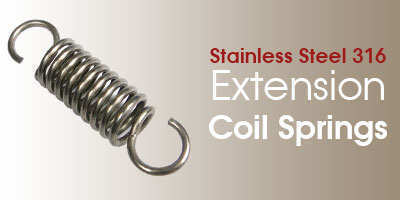
Stainless Steel 17-7 Coil Spring Design
Stainless Steel 17-7 A-313 is the next on the list as far as pricing on stainless steel material types. This material will also work as well as Stainless Steel 302 does in humid/corrosive environments so the only reason you shall choose this material over Stainless Steel 302 is because it is a harder/stronger material type. It has a stronger tensile strength thus giving your spring more force/stiffness without actually changing the spring dimensions. It can also resist higher temperatures; it resists up to 650ºF (343ºC).
